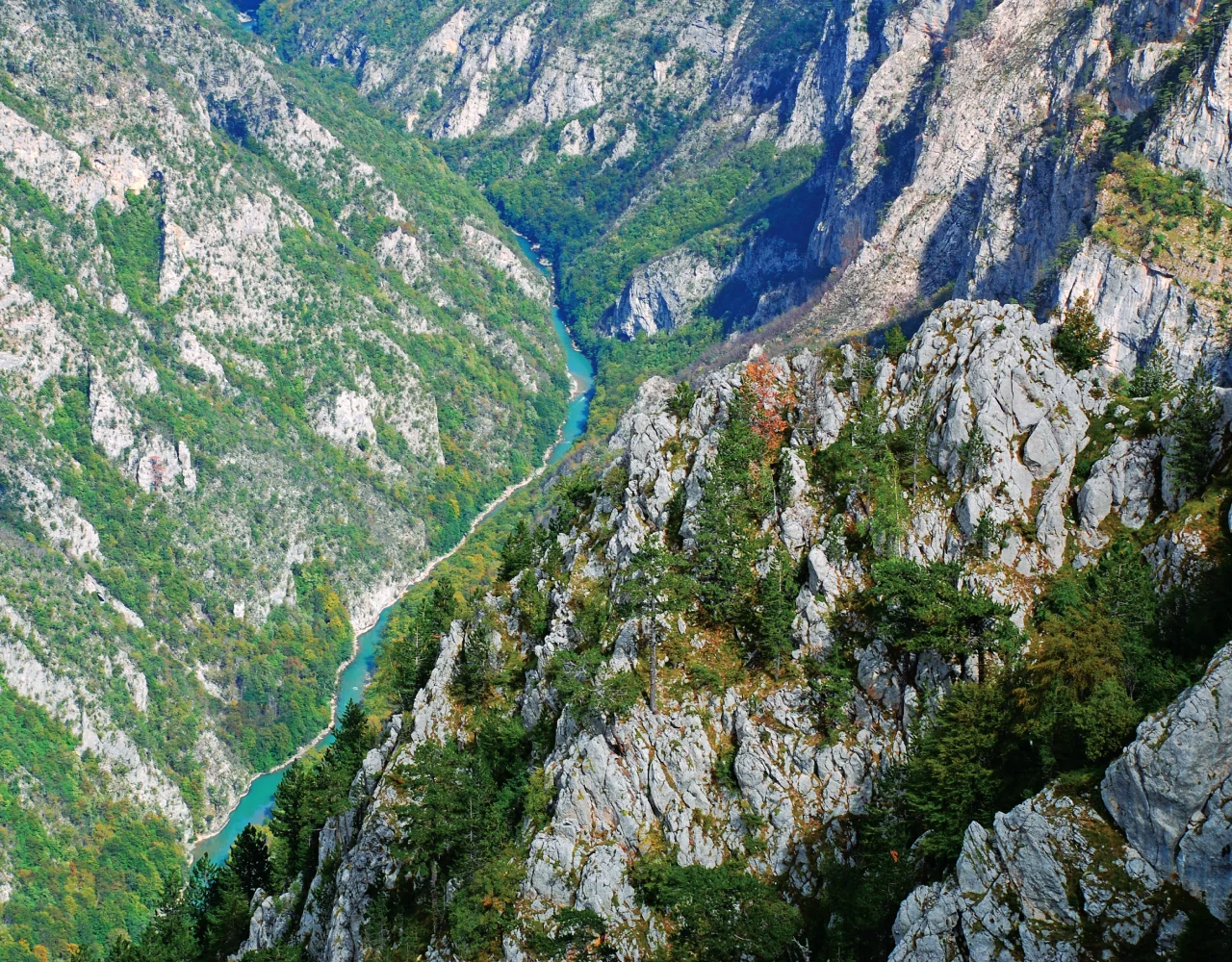The Tara River Canyon, 60 kilometers long, is the second largest canyon in the world, after the Colorado River Canyon, and the first in Europe. Its average depth is 1073m, and the greatest is 1333m. It is a reserve for many endemic species of plants and animals, which is why it was included in the UNESCO program "Man and the Biosphere" in 1977 as an exceptional geomorphological and ecological entity. A few years later, in 1980, together with Durmitor National Park, it was included in the UNESCO list of World Heritage Natural Resources. Rafting on the river Tara is a special tourist attraction
Tara Canyon is extremely alive, green and lush, rich in evergreen and deciduous flora. The water in the canyon and along the entire course of the river is of the first category and is completely drinkable, that's why it is rightly called the "Tear of Europe", There are about eighty caves known in the canyon that are still insufficiently explored and in some of them traces of life in prehistoric times have been established.

The canyon was named after the river Sušica that flows through it. It is 15 kilometers long and up to 700 meters deep. At the end of the canyon, the river flows into Tara. There is one of the deepest points in Durmitor National Park, with a height of 512 meters. In order to create such a deep cut, the joint action of tectonic forces, the force of water and the shaping of stone is necessary.
In the period between 1919 and 1939, rails were laid in the canyon, which were used to transport trees.
The trees were transported from this place to the Danube by rafts. Today, those rails cannot be seen, nor can the 11 mills that existed here. Almost all of them are gone. The remains of the stone walls of the mills can only be seen in some places.
On the plateaus on both sides of the canyon, there are two authentic villages: Nedajno and Mala Crna Gora, which "hang" as it were, on the edge of the abyss. It is interesting that these two villages, across from each other, have almost no communication. Although they "touch" visually, they are as far as 16 km from each other by road. People from Nedajne and Montenegro practically do not know each other, they are too "distant" from each other...
Komarnica is a river in the north of Montenegro known for its Nevidio canyon. It originates under Durmitor and flows through a canyon 40 km long and 600 km deep. Nevidio is also the last conquered canyon in Europe and represents a major tourist attraction and challenge for canyoning enthusiasts. It was won in 1965 by PD Javorak from Nikšić. Today, with safe equipment and trained guides, it is accessible to almost everyone with better fitness.
The most inaccessible part of the canyon is 1.5 km long and up to 500 m deep. Low temperature, slippery, sharp rocks, narrow passages, darkness, landslides, labyrinths, waterfalls are just some of the obstacles encountered. One section is called "Kamikaze Gate", 500m deep, and in some places barely 20 meters wide. Once you enter the canyon, it is impossible to go back. . The entrance is located at 935 m, and the exit at 810 m above sea level.
The area around the entrance is one of the most beautiful areas in the Durmitor region. The beauty of this region is the village of Pošćenje with two glacial lakes.
Draga River is the right tributary of Tara, 11.2 km long and originates from several sources below the peaks of Ljubišnja. It flows through a narrow and wild canyon 800 m deep. It is a sinkhole and has two waterfalls along its course. At the confluence of the Draga and Tara, there is a strong spring, Turka glava, and a little lower, the spring of Kućišta.
What makes Draga particularly interesting is the fact that it is richer in water in its upper reaches than at its mouth. The lower part of the Draga river canyon is part of Durmitor National Park. Through this canyon, you can reach the Tara River and the famous Draški Virov from Jel's stump through attractive gorges.
Canyoning through the Draga River is a paradise for those who are eager for an adrenaline adventure, this area is also a paradise for alpinists, speleologists and paragliding enthusiasts, and hunting and fishing tourism can also be developed here... At the beginning of this canyon, an old river watermill still resists time. which could also be one of the tourist attractions of this region. This canyon is a kind of natural attraction and a great eco-potential of the tourist offer in Pljevlja, with opportunities for an active vacation in nature.
